By TREVOR HOGG
Images courtesy of Apple+ and Legendary Entertainment.
By TREVOR HOGG
Images courtesy of Apple+ and Legendary Entertainment.
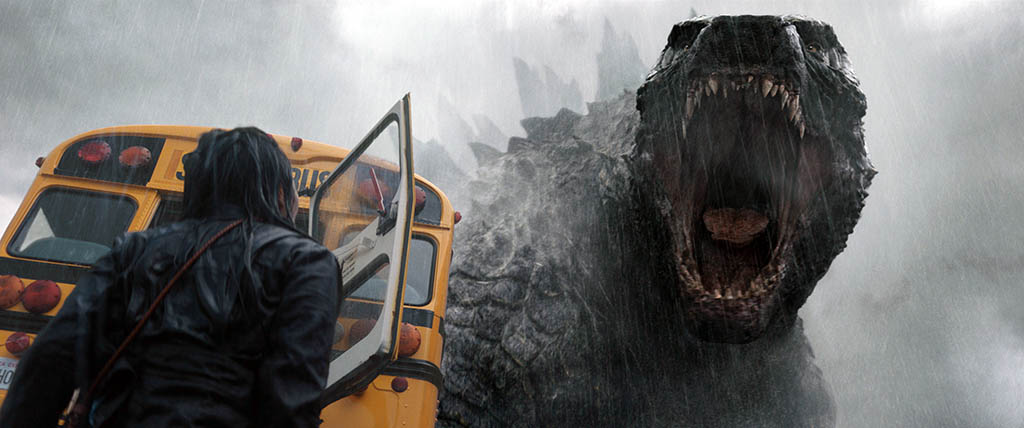
Cinematographer Jess Hall decided to go with anamorphic lenses because they compress perspective thereby bringing the creatures even closer to the viewer.
The AppleTV+ series Monarch: Legacy of Monsters provides the backstory for the mysterious organization formed upon the discovery of kaiju through a family drama where two half-siblings learn of each other’s existence and their father’s connection to Monarch. The MonsterVerse production created by Chris Black and Matt Fraction on behalf of Legendary Entertainment, Toho Company and Warner Bros. Entertainment consists of 10 episodes that required Visual Effects Supervisor Sean Konrad to craft over 3,000 shots with the help of Rising Sun Pictures, Rodeo FX, Framestore, FuseFX, Outpost VFX, Crafty Apes, Wētā FX, MPC, Storm Studios, Vitality VFX, BOT VFX, Mr. Wolf, Scarab Digital, The Third Floor, Proof, MPC Visualization and an in-house team.
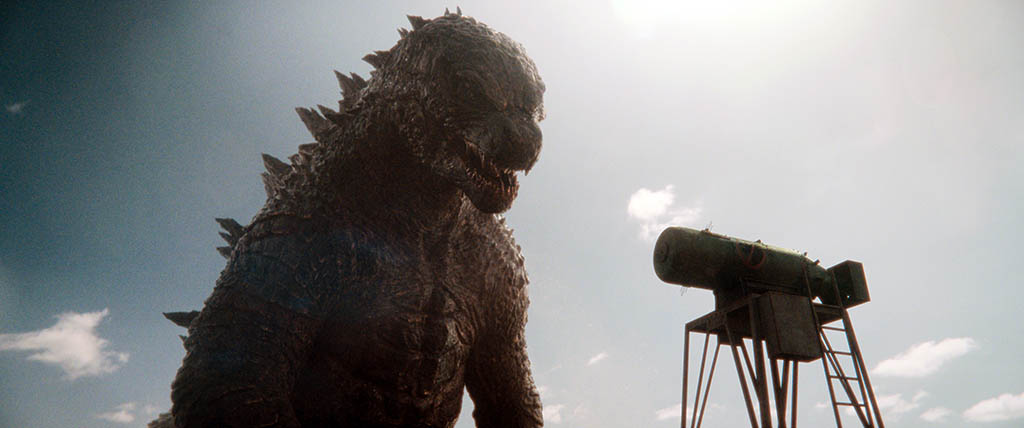
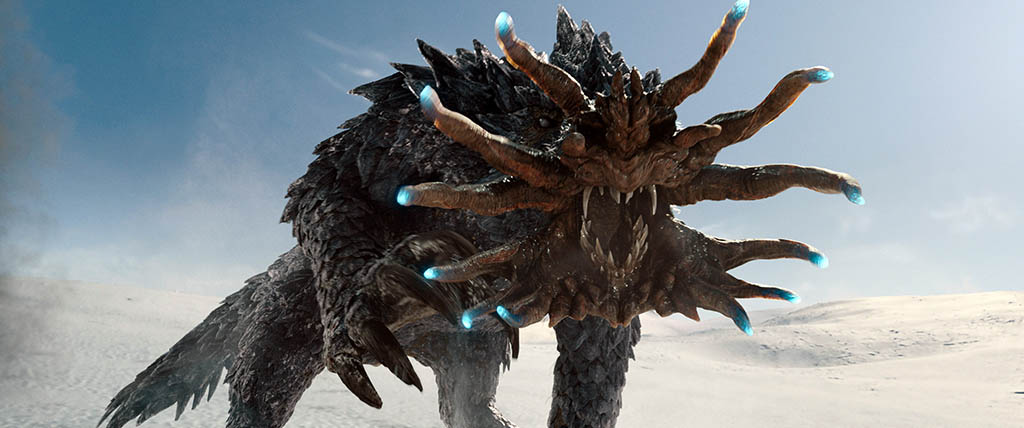
MPC, Rodeo FX, Rising Sun Pictures and Wētā FX worked on Godzilla, which appears in two different forms over the course of the series.
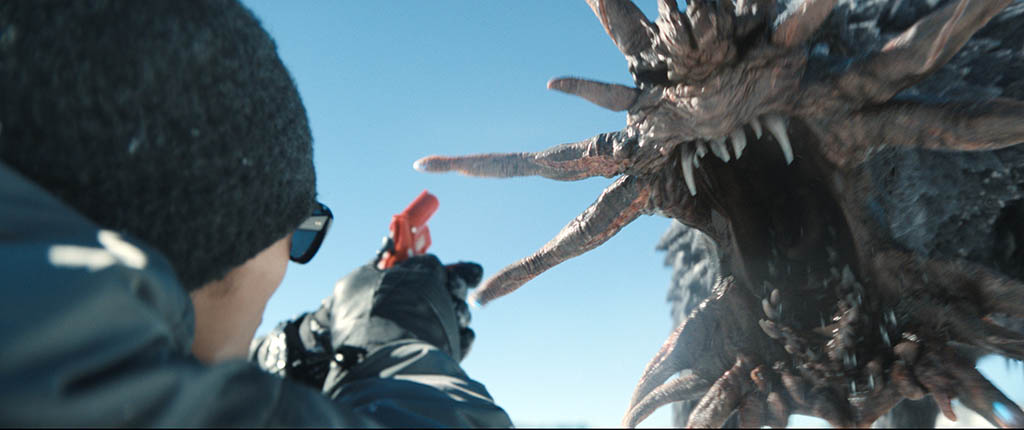
The Frost Vark is a cross between a giant star-nosed mole and pangolin, and has the ability to suck the heat out of objects.
Integrated into the narrative are previous MonsterVerse installments that appeared on the big screen. “What’s interesting about the show is the scene in the beginning of Episode 101 has this Kong: Skull Island [2017] classic adventure movie tone that is a bit off-the-wall crazy and every second has a new amplification of stakes through the action,” Konrad notes. “Then you get back to Kate Randa’s [Anna Sawai] perspective later on in the episode, and you’re going to Godzilla [2014] and you’re having that serious tone of this is a city being destroyed. You need to communicate those ideas visually in a way to people that is meaningful and serious. Then you have the final creature scene in the episode, which is a bunch of new monsters coming out of the ground and attacking our protagonist. Each one of them has a different tone.” Do not expect shots from the kaiju point of view. “A lot of the series is constructed around a subjective point of view of our characters experiencing the action from their perspective and reinforcing that with the visual effects design. A lot of times we knew the kind of creature we wanted and the terrain was immaterial to what the creature was doing, but it did influence how and where we shot it,” Konrad says.
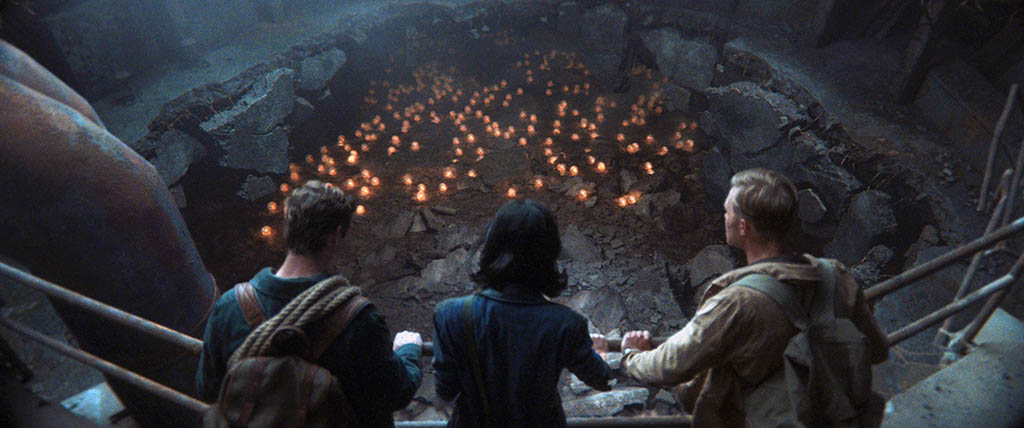
The Endoswarm nest is lighted by the hole in the ceiling of the reactor.
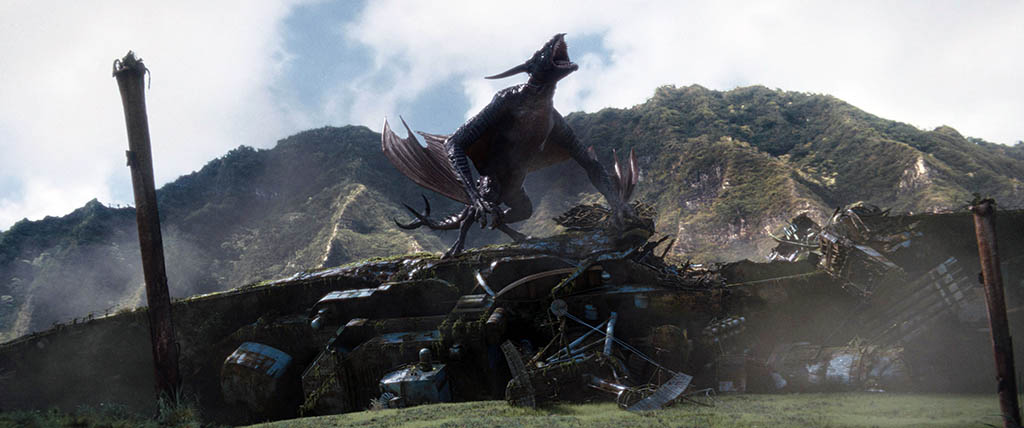
Adding to the mystery of the Ion Dragon is it being an aquatic creature with wings living in the middle of a jungle.
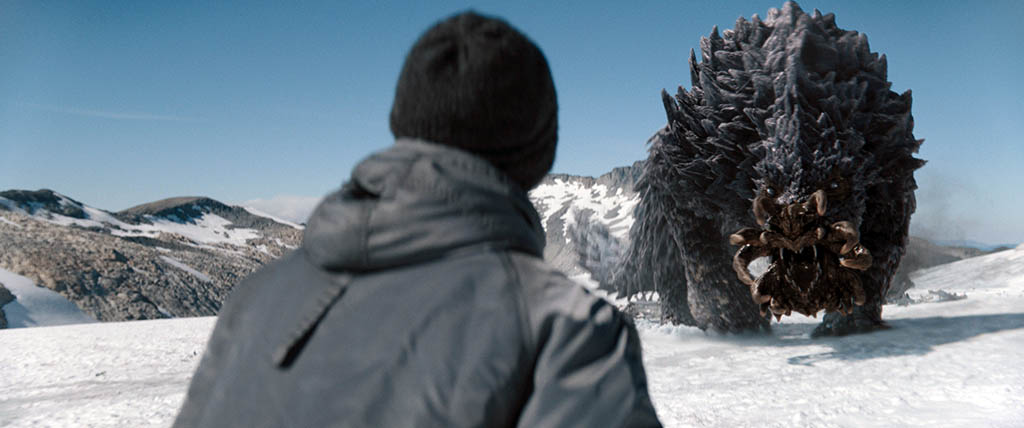
The Frost Vark is one of the new additions to the MonsterVerse.
Taking advantage of the physical location rather than rely heavily on bluescreen was the mandate. “We went to a bunch of locations in Hawaii for Episode, 101 and one of them was Lānaʻi Lookout [on O’ahu],” Konrad recalls. “It is this beautiful volcanic rock cone that points out into the ocean. If you’re running away from a monster that’s a great place to be heading towards. We looked at the terrain and the action we wanted to plan. There is a big bamboo forest in the corner of this landscape, and we let that take you through Bill Randa [John Goodman] being chased by the Mother Longlegs spider from Kong: Skull Island to a single point on that landmass, and this giant crab, which is made from the same volcanic rock, comes out of the ground. It was difficult because we prevised the scene based on some storyboards before scouting it, which is always a dangerous thing. We didn’t have a crab designed, so we grabbed The Third Floor graphic crab out of their archive and animated that for the previs. Simultaneously, I was doing the concept for the crab itself. All of that happened within a five-week period where we concepted, re-prevised and re-storyboarded the whole thing. It’s so much better than trying to shoot that into a bluescreen. It’s a hard process and definitely time-consuming. People did some brilliant work to get that done. We wanted the characters to feel in the action.”
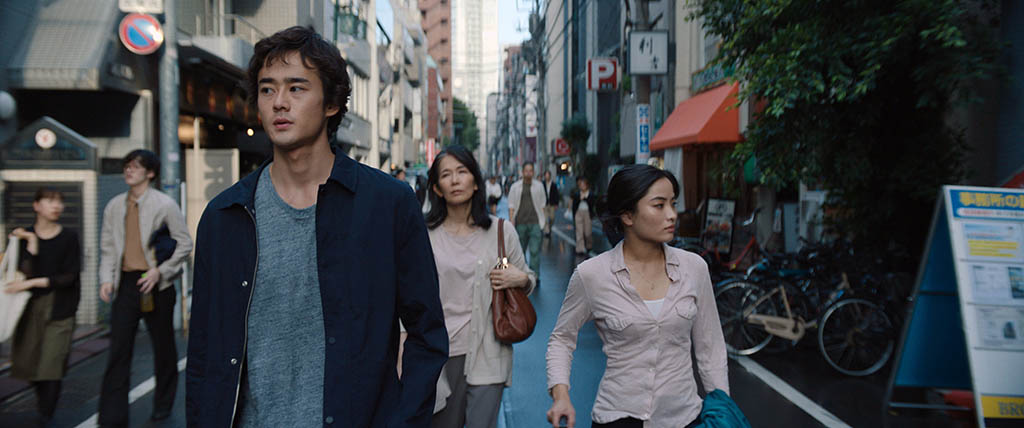
The lighting was naturalistic for the contemporary scenes in Tokyo.
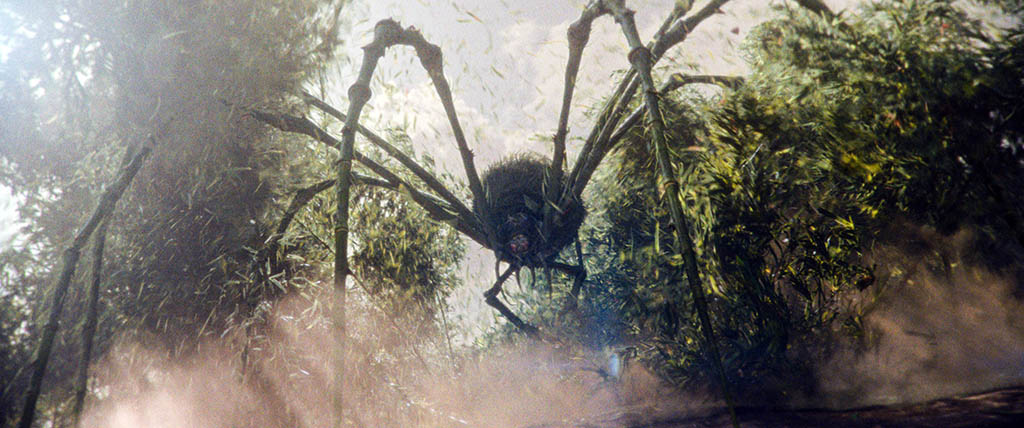
The Mother Longlegs makes a reappearance in what feels like a cut scene from Kong: Skull Island.
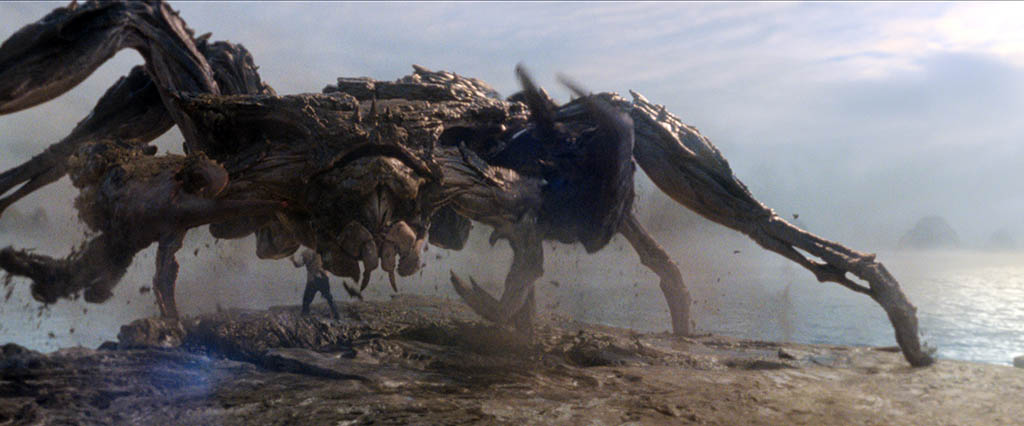
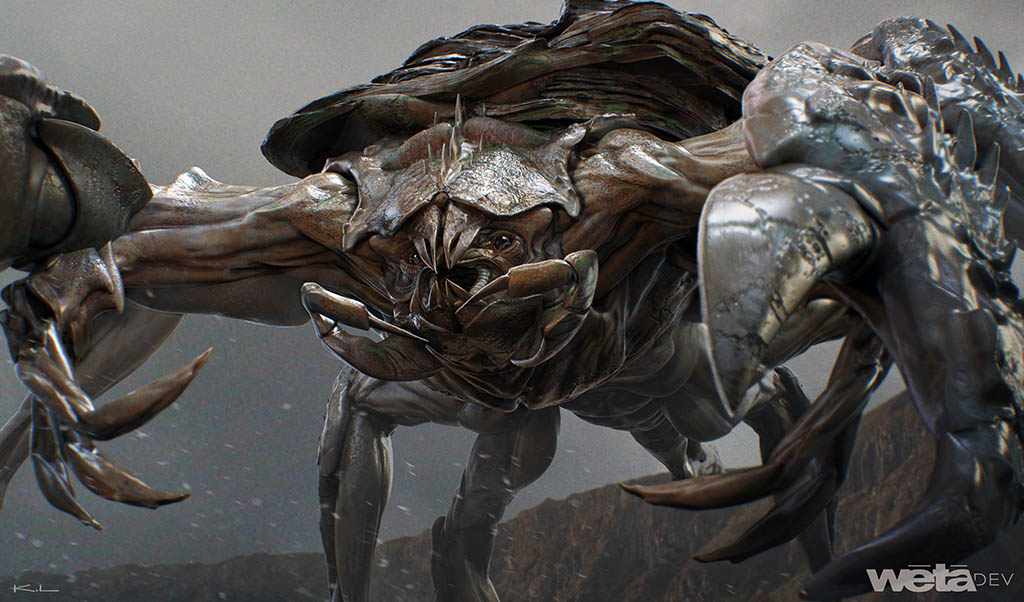
The design of the Mantleclaw was inspired by the volcanic environment where the scene takes place.
“There is a big bamboo forest in the corner of this [volcanic Hawaiian] landscape, and we let that take you through Bill Randa [John Goodman] being chased by the Mother Longlegs spider from Kong: Skull Island to a single point on that landmass, and this giant crab, which is made from the same volcanic rock, comes out of the ground. It was difficult because we prevised the scene based on some storyboards before scouting it, which is always a dangerous thing. We didn’t have a crab designed, so we grabbed The Third Floor graphic crab out of their archive and animated that for the previs.”
—Sean Konrad, Visual Effects Supervisor
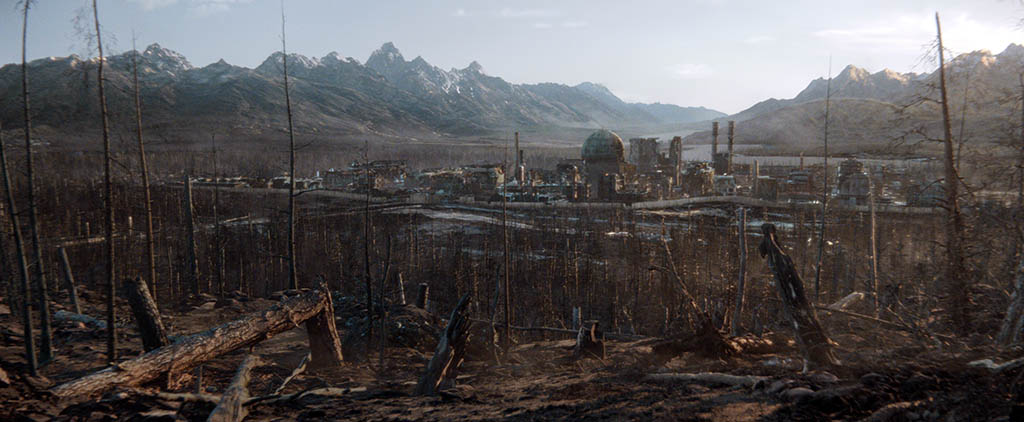
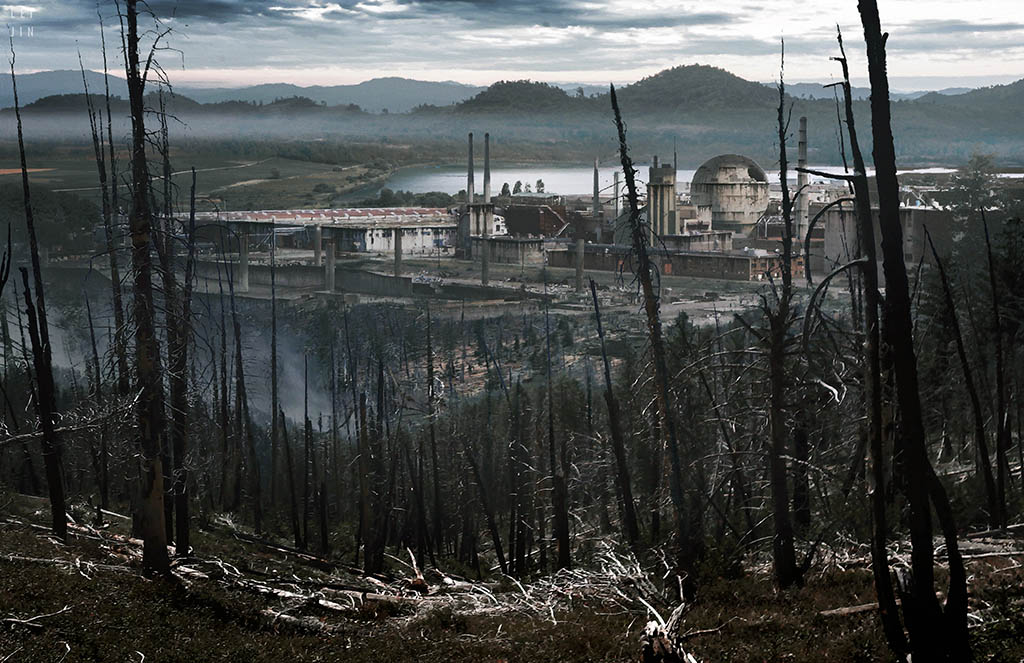
A pivotal location is the nuclear reactor that experiences a meltdown, which has become as portal where monsters can enter Earth.
Television production happens at a quicker pace than movies. “When you’ve got one movie, you have over six months to do an hour and a half episode as supposed to 30 days to shoot a movie,” sates Special Effects Supervisor Paul Benjamin. “The setups have to be doable to make it into TV land. We had a bit of prep time for the first two episodes. It helps if the directors are on beforehand to know if you have some bigger builds. However, it’s always hard to get the directors before the episode starts.” Some visual research was done regarding the MonsterVerse. “I took a quick view of what they’ve been up to and been doing. When you watch the movies, sometimes it’s hard to figure out how they did everything, or how you block it out and film it. You get a general sense of what you’re up against or what they’re going to be looking for. But as far as pulling builds from watching the movies, it’s quite difficult,” Benjamin adds. Atmospherics were not a significant part of the visual language. “We did a couple of episodes of heavy smoke when they went to the Lost Lands to give a different look to the environment. We definitely did some snow but didn’t do a lot of exterior snow dressing, except for the base camp.” The weather was not always agreeable. “We did a snow dress and had a heavy rain that night, but luckily it held up and we didn’t plug any drains. We had somebody there watching just in case all of our paper snow came down and plugged one of the drains,” Benjamin remarks.
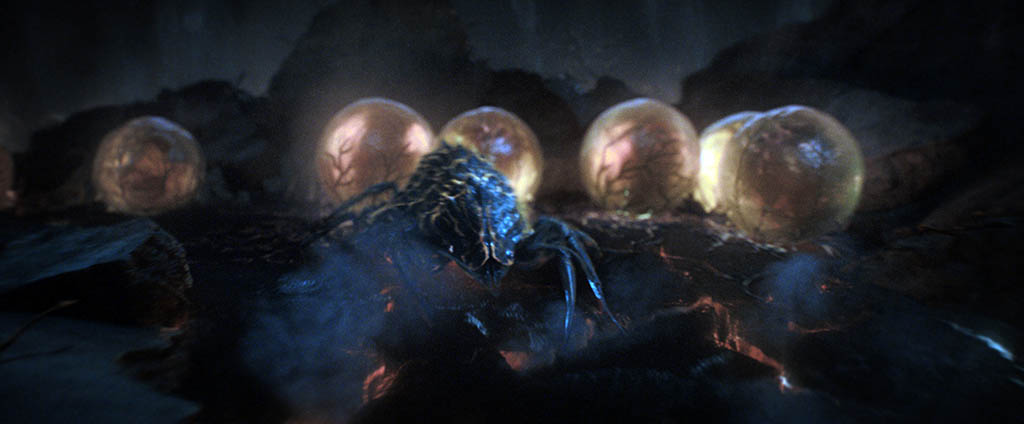
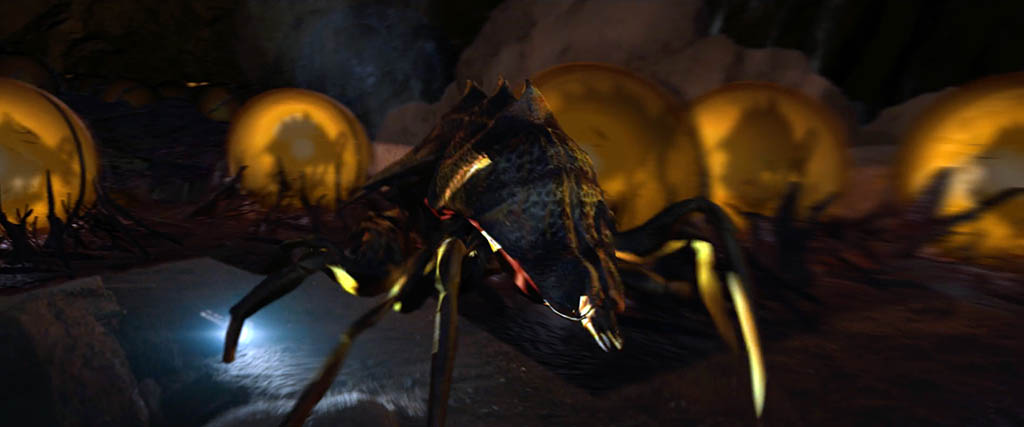
Originally, the Endoswarm was suppose to resemble a millipede, but the decision was made to make it appear more alien.
“We did one shaky gimbal set and that was for the hallway scene in the USSR when the ship was shaking. The monster comes in there and starts bashing around. We built that whole big deck on a floor and made it flip back and forth and tilted it up to whatever angle we wanted. We had big shaker motors on it and rocked it back and forth this way and tilted it that way. We shook that one pretty good.”
—Paul Benjamin, Special Effects Supervisor
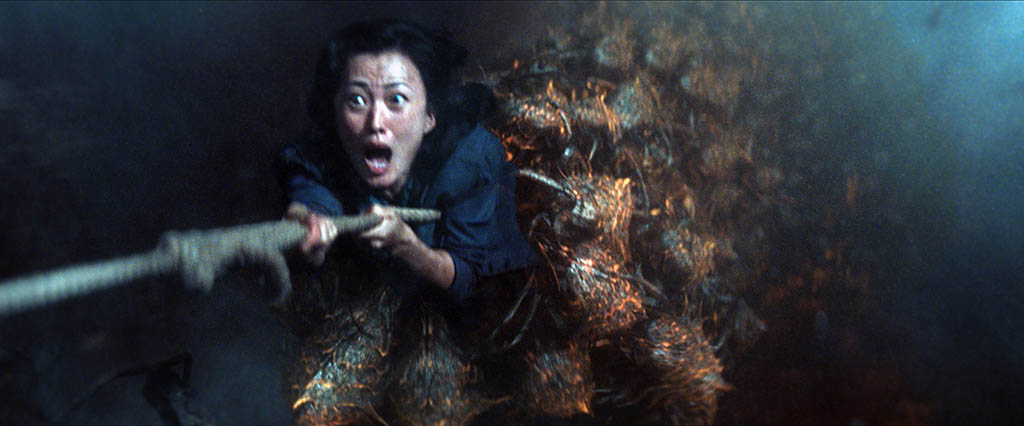
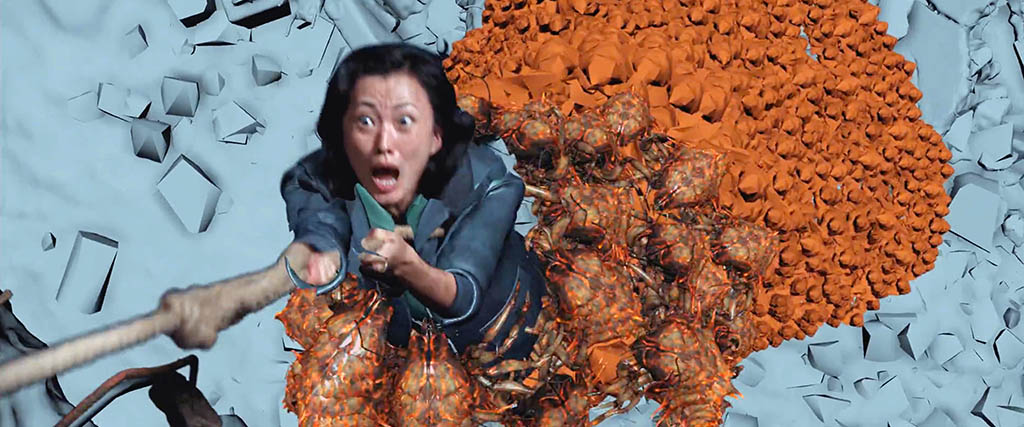
Keiko getting attacked by the Endoswarm is made more horrific by them piling onto each other to cause her to fall.
Airbag decks were favored over hydraulic gimbals, such as when the school bus is tipping over the severely damaged Golden Gate Bridge. “We did one shaky gimbal set and that was for the hallway scene in the USSR when the ship was shaking,” Benjamin explains. “The monster comes in there and starts bashing around. We built that whole big deck on a floor and made it flip back and forth and tilted it up to whatever angle we wanted. We had big shaker motors on it and rocked it back and forth this way and tilted it that way. We shook that one pretty good.” It was not all about shaking things. “For the last few episodes we did a vortex, so we had a lot of big wind machines and ratcheting things and pulling things into the vortex. I want to see that portion of it. For the vortex in Alaska, we were shaking the trucks and equipment. But when the creature was chasing them, we didn’t do any explosions for that. The only thing that we did was blast air cannons to have some snow flying around. We did some pyro for the seismic charges that were set off at the power plant. Then we had Kurt Russell running through the lightning field. We had a bunch of mortars going off around them at that point, too.” After being in special effects for 23 years, Benjamin learned a particular lesson. “A lot of times, I find that the smaller gags are trickier than the bigger ones, like the dripping goo coming down from the ship. Something like that can be a lot of work, and testing to the desired look that everyone wants for that is sometimes more work than flipping a car over.” The practical elements are critical in making the stunts and visual effects believable. “We’re trying to do anything to help give the set some life so that the actors can get into it a bit more. You don’t have to fully act when you have the set moving around.”
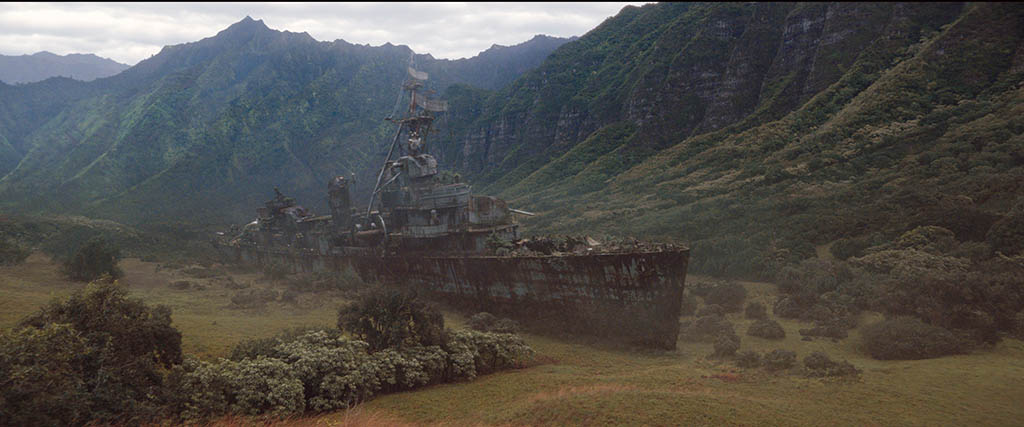
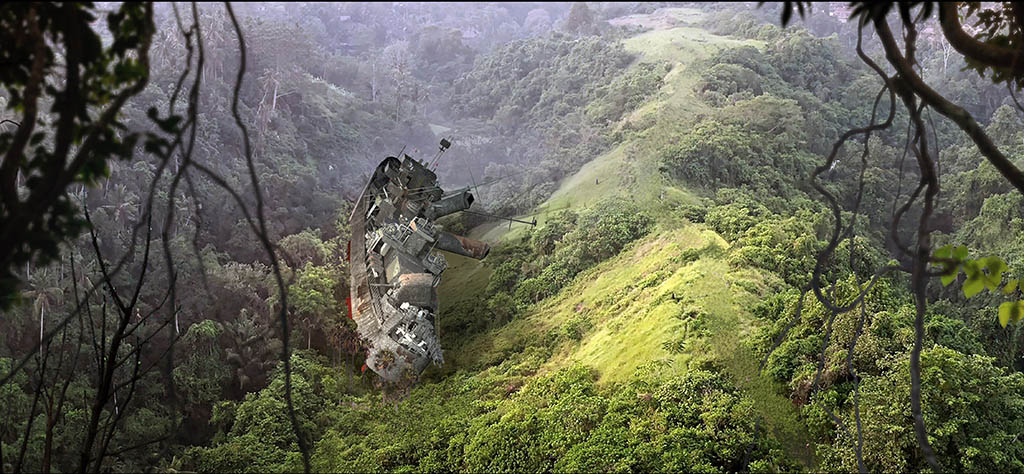
A Fletcher Class Destroyer is found inland.
“A lot of times, I find that the smaller gags are trickier than the bigger ones, like the dripping goo coming down from the ship. Something like that can be a lot of work, and testing to the desired look that everyone wants for that is sometimes more work than flipping a car over.”
—Paul Benjamin, Special Effects Supervisor
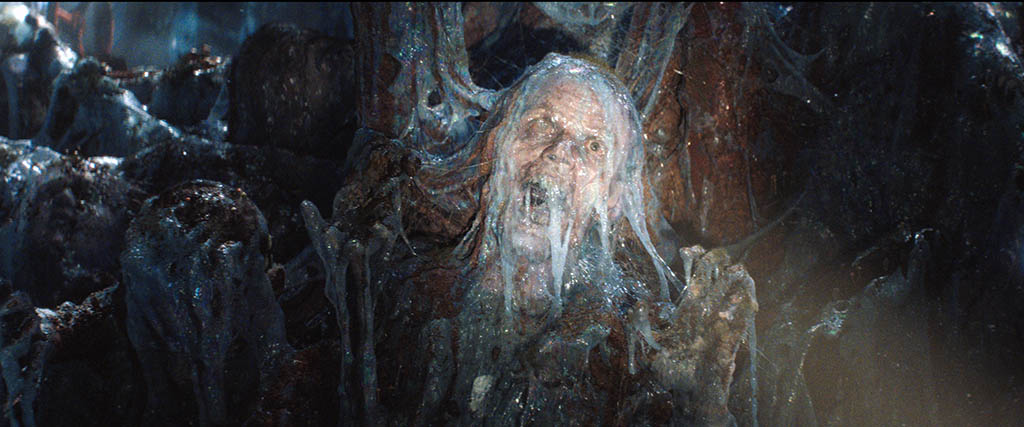
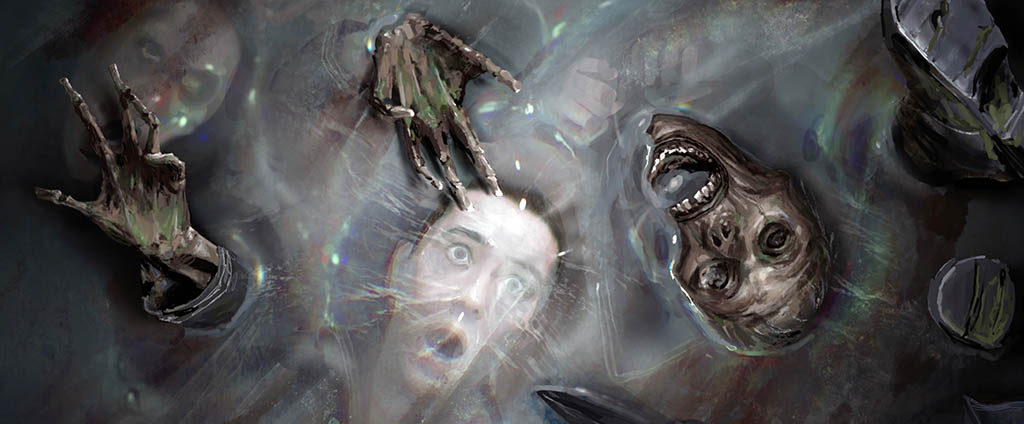
One of the challenging special effects to get right was the goo that belongs to the Ion Dragon.
Collaboration is pivotal to the success of any project. “Ultimately, my attitude is that visual effects are a big part of the show,” states Jess Hall, Cinematographer, Episodes 101 and 102. “The CG has to be integrated into the photography, so I take it as my responsibility that those things have to work together. That means being collaborative and also organized about how you light; for example, on greenscreen matching lighting and doing the work in advance in terms previs and storyboards. But, ultimately, I treat it as a collaboration for which I bare a lot of responsibility for the end result. It’s not like I’m going to shoot someone on a greenscreen, hand it over to visual effects and let them do their thing; that’s not going to produce a good result.” A different color palette was adopted for the series. “We scaled back a little bit on the gaudier and pulp elements of some of the movies. We tried to bring it more into the dramatic cinematic space. Even if you look at our version of Skull Island. my reference for that was more Apocalypse Now. It was the golden warm light but naturalistic approach. Then we go to Tokyo and you have these cool tones, but the lighting was always naturalistic. The composition was reasonably consistent. The lenses I would shoot the faces on were a similar composition. You’re building this thread of visual language that is bulletproof in a way. You can apply these period looks or more action-sequence elements in there, but it doesn’t feel out of place. That was the challenge of the show, and a lot of thinking around design for me was about bringing them together enough, but having them different enough because you also had to understand these timelines. It was important that Skull Island did look different from the 1950s content, otherwise I don’t think you understand where you were.”
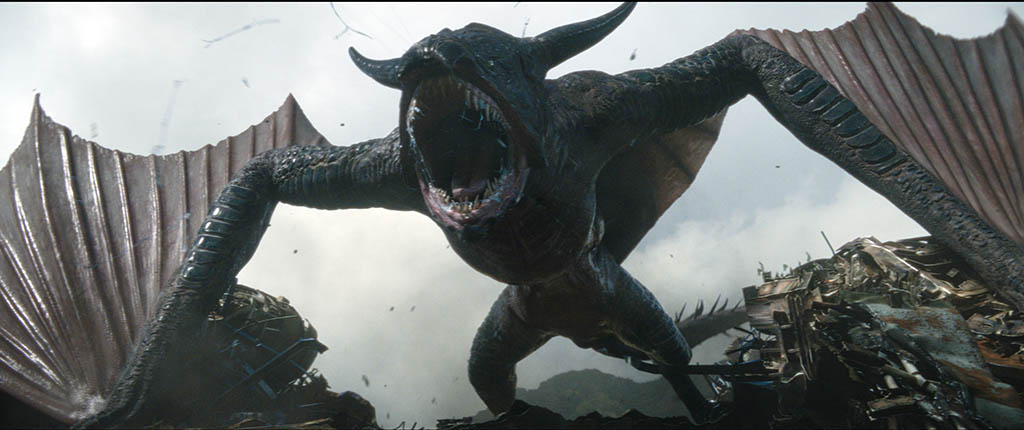
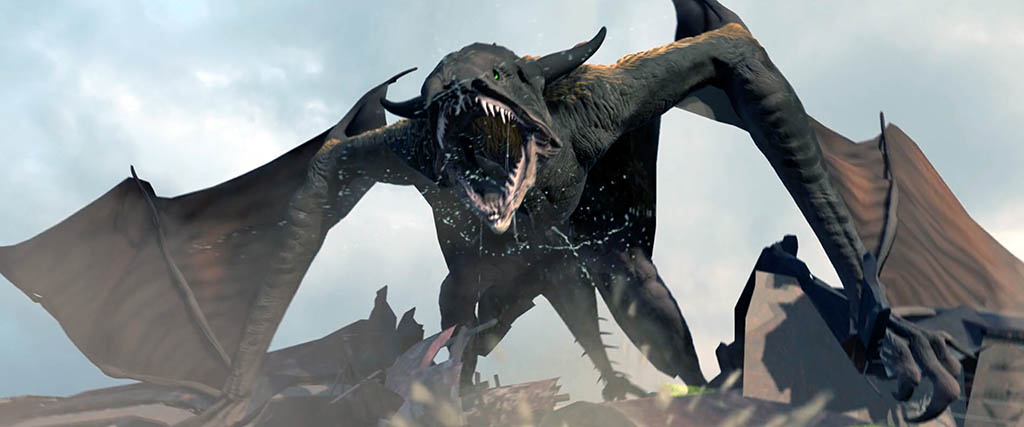
The wings of the Ion Dragon had to increased to get a flying cycle that looked believable.
“We scaled back a little bit on the gaudier and pulp elements of some of the movies. We tried to bring it more into the dramatic cinematic space. Even if you look at our version of Skull Island. my reference for that was more Apocalypse Now. It was the golden warm light but naturalistic approach. Then we go to Tokyo and you have these cool tones. but the lighting was always naturalistic.”
—Jess Hall, Cinematographer
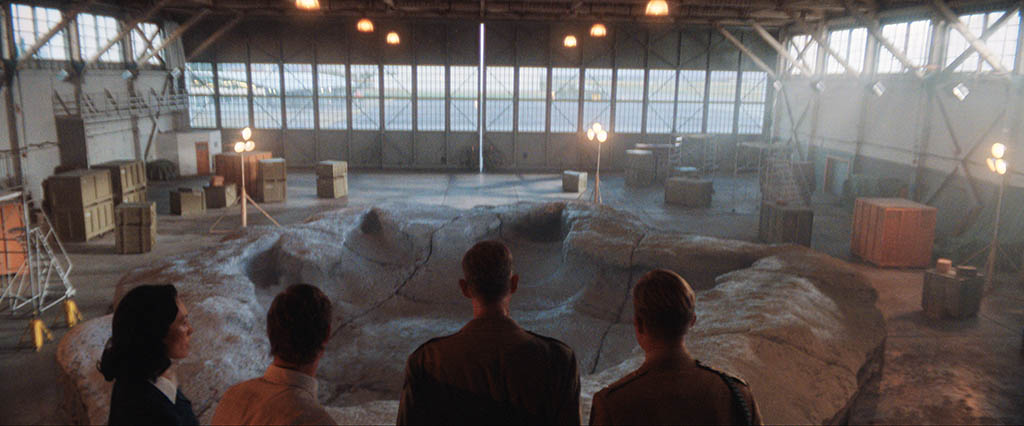
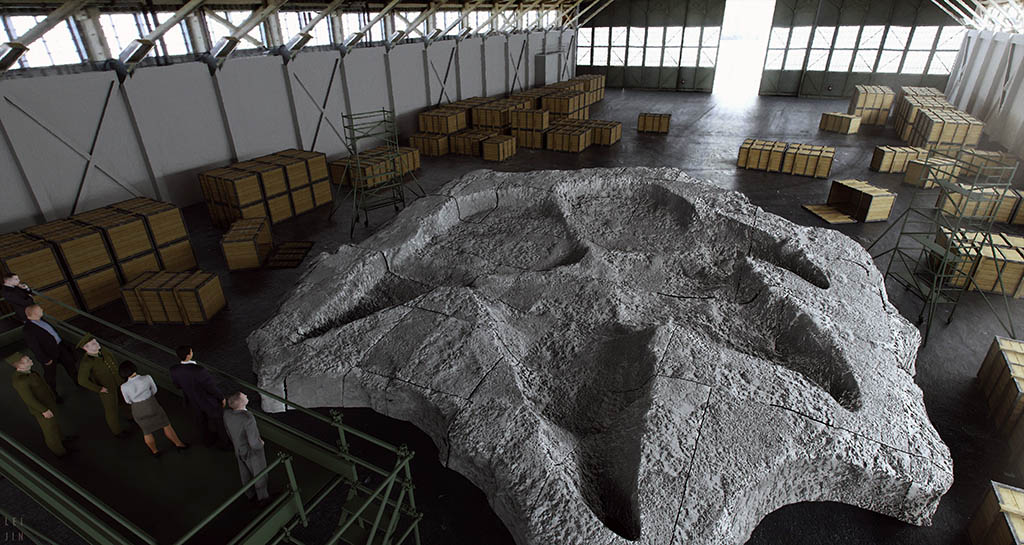
A prevailing challenge for visual effects was conveying the proper size and scale of the creatures.
Hall partnered with filmmaker Matt Shakman on Episodes 101 and 102. “Matt is a dramatist and a real actor’s director,” Hall describes. “Having to try to pretend that things are moving around you, and you’re on a bluescreen and saying, ‘Okay, the crowd is coming from the right.’ Or, ‘Now turn to look at the crowd 300 feet away.’ ‘Follow the tennis ball.’ We’ve all seen how that can be quite tough for actors and performers. Matt is always looking to put the actors in the position where they’re comfortable and can give the best performance, but also feel the scene. We went to practical photography. There were a lot of visual effects but a lot of photography on location, and a lot of in-camera stunt action and real effects work that went on in all of these scenes that added to the sense of realism, which is what we wanted.” Atmospherics like smoke were never utilized without intention. “You have to be careful about how much you put in because quickly you lose the contrast of the shot. It’s something that you rely on special effects to operate. Ultimately, I’m the one who has to say, ‘Turn the smoke on or off.’ The whole show had this low-level haze. I was going for a softer, more dramatic look with a bit of texture in there and in the shadows.” The legacy of what has come before loomed large over the production. Hall observes. “You’ve got this huge IP and franchise and so many different elements to it. How do you take that, respect that and do that justice, but also do something that is distinct and appropriate for the show that you’re making and is your own work. Threading that needle was hard.”